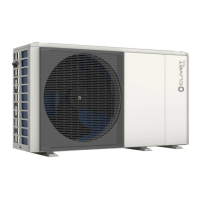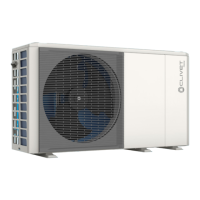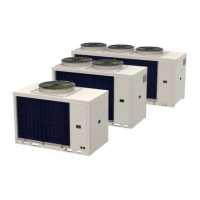
Do you have a question about the CLIVET WiSAN-YME 1 S 9.1 and is the answer not in the manual?
Outlines general safety regulations and required personal protective equipment for operations.
Provides CAUTION for outdoor installation and site selection based on local regulations.
Provides technical data including ambient temperature ranges for operation modes and measurement guidelines.
Lists conditions for the installation site, including ventilation, safety, space, and protection from elements.
Illustrates standard installation clearances and configurations for single and parallel units.
Details installation considerations for units exposed to strong wind, including positioning and protection.
Explains ground mounting procedures, antivibration mounts, and provides dimensions for ground fixing.
Describes available kits for wall mounting and shows details of interlocking and bracket fixings.
Details placing the unit on the installation structure using slings and cautions against tilting or damage.
Details connecting the unit to a DHW storage tank, recommending close proximity and thermal insulation.
Explains the necessity of preventing ice formation and the unit's built-in freeze protection features.
Explains minimum water content requirements and expansion tank control for common systems.
Describes the procedure for filling or topping up the system with water, including pressure checks and air purging.
Lists critical electrical connection warnings, including circuit breakers, cable types, earthing, and interference.
Presents a general system diagram showing connections for various components like solar kits, thermostats, and tanks.
Details terminal blocks CN11, CN7, and CN30, showing connections for solar input, DHW, pumps, and cascade systems.
Describes SMART GRID and photovoltaic management, detailing unit operation based on signals.
Explains dip-switch settings for various configurations like built-in heaters and cascade systems on the hydraulic module.
Explains three methods of connecting a zone thermostat for controlling the unit based on application type.
Covers water and electrical connections, configuration, and backup master setup for cascaded units.
Describes settings accessible via password, intended for technicians during initial unit setup and configuration.
Details settings for DHW mode, including enabling functions, disinfection, priority, and pump management.
Details settings for Cooling mode, including enabling/disabling, climate curve updates, and temperature limits.
Explains settings for Heating mode, including enabling, climate curve updates, and temperature limits.
Details settings for Automatic mode, defining outdoor temperature limits for cooling and heating operations.
Explains control settings for water or room temperature and defines zone control configurations.
Covers settings for cascade systems and limits HMI access for BMS management.
Explains how to select climate curves for automatically setting water temperature based on outdoor conditions.
Guides on configuring network settings for controlling the unit via the MSmartHome App using a Wi-Fi module.
Guides on selecting the operation mode (Heat, Cool, Auto) via the interface or room thermostat.
Describes the Climate Temperature Set function for automatically adjusting water temperature based on outdoor conditions.
Details the ECO mode for energy saving, its activation conditions, and setting timers.
Covers safety checks, work procedures, area ventilation, refrigerant presence, fire extinguishers, and ignition sources.
Details refrigerant removal, evacuation, charging, and safe disposal procedures for equipment.
Warns about electrocution risks and lists annual maintenance checks for water pressure, filters, valves, and control box.
Provides general troubleshooting guidelines and addresses common issues like incorrect set temperature or insufficient water flow.
Lists error codes E0-E7, their causes, and corrective actions for communication, sensor, and flow switch errors.
Continues the error code list, covering sensor failures, EEPROM issues, and communication errors.
Lists error codes H2-HP related to temperature sensors, fan errors, voltage faults, and pressure sensor issues.
Details error codes P0-P5 for pressure, temperature, and water flow protection errors, including causes and corrections.
Lists error codes P6, P9, F1 related to module protection, fan protection, and voltage faults.
Lists error codes L0-L9 related to compressor inverter faults, voltage protections, and speed variations.











